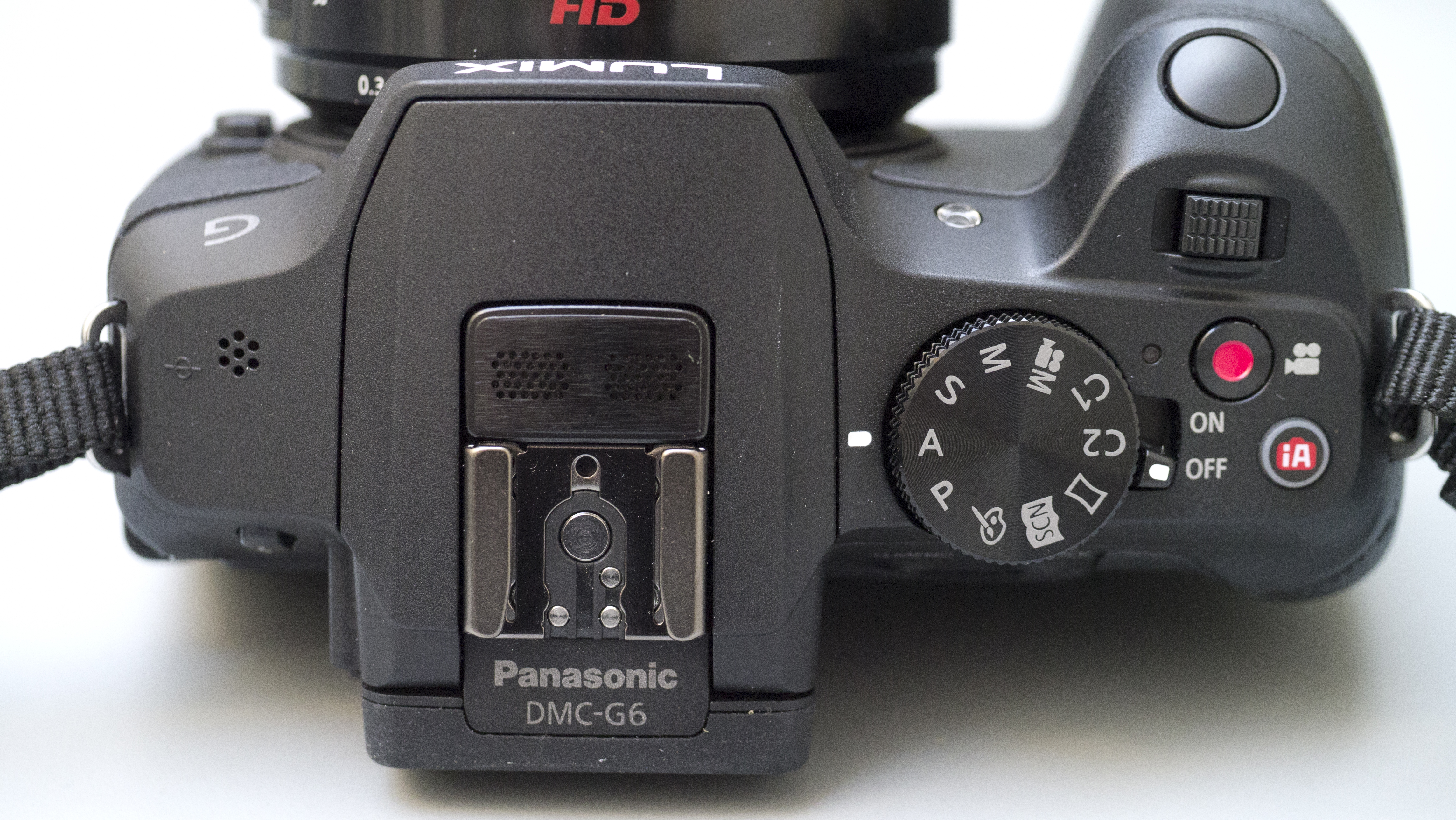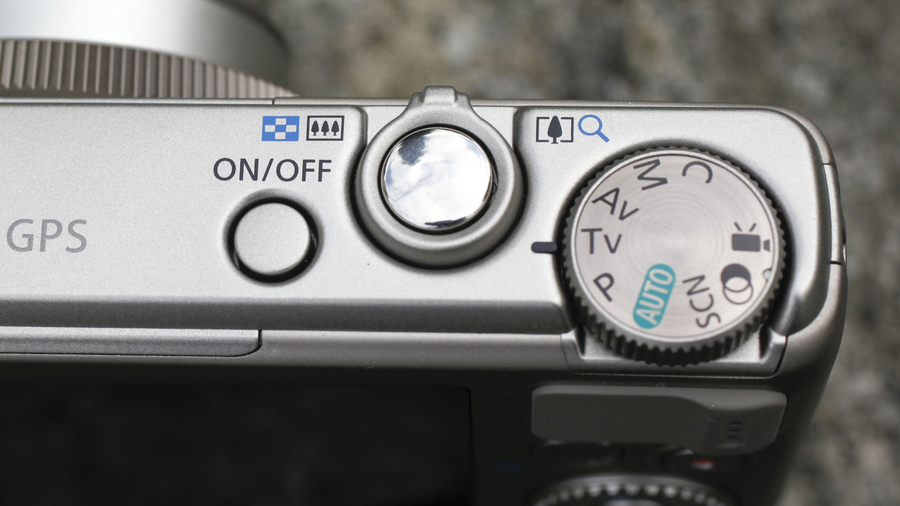
Quick start: Choose Program option.
Many cameras offer automatic, semi-manual and manual exposure options, together with a handful of preset options called scene modes, in order to cater for a range of abilities. Whereas the automatic options leave everything to the camera, the presets can be chosen to suit a particular subject, such as a portrait or landscape scene.

Above: Exposure mode may be set using a dial on the top of the camera.
More recent DSLRs and CSCs have an option that combines automatic and preset modes into one, which instructs the camera to look for key elements in a scene and pick the most suitable scene mode to use.
Aperture Priority and Shutter Priority (A and S or Tv) modes are semi-automatic. In Aperture Priority mode you set the aperture, while the camera works out the shutter speed. Conversley in Shutter Priority mode, you select the shutter speed and the camera sets an appropriate aperture setting.
Manual exposure mode allows you to set the aperture and shutter speed to your liking, in addition to a range of other options such as whether to use the flash.
If you're just starting out and feel uncertain about venturing into manual shooting territory, you may wish to leave your camera on either the Auto or Program modes. The two are similar, although the latter affords more user control, typically by way of shifting the exposure one way or the other and whether to use the flash or not, along with a handful of less significant options.
Get daily insight, inspiration and deals in your inbox
Sign up for breaking news, reviews, opinion, top tech deals, and more.
So at what point should the novice user call upon the more manual exposure options?
Generally, Shutter Priority should be employed when there is movement in the scene. Fast shutter speeds freeze movement while slow (long) ones record it as a blur. Short exposure tomes, or fast shutter speed are usually used with sports to freeze the action.
Scenes with moving traffic or flowing water require long exposures to blur the movement - a tripod may also be required.

Above: Canon uses the term Time Value (Tv) instead of Shutter Priority.
Aperture Priority, meanwhile, is best suited for scenes where control over depth of field is more crucial than the exact shutter speed. Wider apertures (small f/numbers such as f/2.8, f/4 or f/5.6) produce a shorter depth of field than smaller ones (large f/numbers such as f/16 and f/22 etc). So, you may choose to use a wide aperture for a portrait to blur the background, before switching to a smaller aperture to capture the full expanse of a landscape sharply.
Once you've mastered the Aperture Priority and Shutter Priority options, you may wish to explore the fully Manual option. Here you're responsible for setting both the aperture and shutter speed, although the camera's metering system will guide you with regards to correct exposure or multiple exposures.
This option is useful once you understand how your camera behaves in different situations, since you can instinctively adjust the settings to compensate for any very dark or light subjects. But bear in mind that the exposure compensation function found on all cameras can be used to achieve the same goal in one of the semi-manual modes too.
Current page: Decide on an exposure mode
Prev Page Set image size and compression Next Page Select white balanceThe TechRadar hive mind. The Megazord. The Voltron. When our powers combine, we become 'TECHRADAR STAFF'. You'll usually see this author name when the entire team has collaborated on a project or an article, whether that's a run-down ranking of our favorite Marvel films, or a round-up of all the coolest things we've collectively seen at annual tech shows like CES and MWC. We are one.